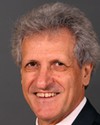Thank you very much, Mr. Chair.
I am very pleased to have this opportunity to contribute to the committee's study on aviation safety and security.
As the chair mentioned, my colleagues joining me here today are Dr. Charles Théroux, who is our director of research, and Monette Maillet, who is our director of policy.
The best value that the Commission can bring to you as a witness is to provide our perspective on the human rights considerations that should be taken into account when developing and implementing national security tools and measures, such as profiling.
Terrorism and other threats jeopardize our fundamental right to life and security of the person. In a free and democratic society, the protection of the population must be of paramount importance.
The Canadian Human Rights Commission recognizes that safeguarding national security is a critical function of government. It also recognizes the expertise of security agencies in developing tools and measures for this purpose.
When national security and human rights are discussed, it is often suggested that we must give up one to have the other. I come to you today to express the position of the commission that both can and must coexist.
The mandate of the Canadian Human Rights Commission covers all federally-regulated employers and service providers. This includes the transportation sector and border services. The Canadian Human Rights Act prohibits discrimination in employment and in the provision of services based on 11 prohibited grounds of discrimination. These include race, colour, national or ethnic origin, religion and disability.
In the context of national security, the jurisdiction of the Commission would be triggered when it is alleged that a national security measure discriminates against individuals based on one or more of these prohibited grounds.
This is because the implementation of national security measures such as screening of airline passengers falls under the definition of service and is therefore within our mandate. Under section 5 of our act, it is a discriminatory practice in the provision of services to deny access to a service or to differentiate adversely in relation to any individual. However, not every measure that discriminates on the basis of a prohibited ground would necessarily be disallowed. The key is whether or not the measure is justifiable.
Paragraph 15(1)(g) of our act provides this exemption: it is not a discriminatory practice if an individual is denied services “or is a victim of any adverse differentiation and there is bona fide justification for that denial or differentiation”.
Human rights jurisprudence provides guidance for determining whether a measure that is discriminatory can be justified. The test would include looking at, first, the extent to which the measure is necessary; second, whether there are less discriminatory ways of achieving the same objective; third, the effectiveness of the measure; and fourth, the extent to which the infringement on human rights outweighs the benefits gained by the measure.
I will now turn to the issue of profiling. Where profiles are appropriately constructed and applied, the practice of profiling could have the potential to reduce the number of individuals who are identified for further screening. The use of profiling as a national security measure—for example, during screening at airports—raises human rights issues when the characteristics and behaviours identified in the profile are linked to one or more of the prohibited grounds. For example, profiling by identifying persons who have paid cash for a one-way ticket, do not check luggage, etc., is not linked to one or more of our prohibited grounds. On the other hand, identifying persons based on a certain race or ethnic origin would be.
As part of its mandate to develop and advance human rights knowledge, the Canadian Human Rights Commission initiated a research program on national security and human rights post 9/11. One report is the one you have before you entitled “The Effectiveness of Profiling From a National Security Perspective.” This report is a literature review of studies that have been done on the issue of profiling. It notes the general lack of scientific rigour in most of the studies reviewed. As a result, the authors recommend that further research be conducted on the use of profiling using a rigorous approach to development and validation that incorporates a solid evaluation component.
The report also mentions the challenges faced by any agency wanting to develop a scientifically based profile when the frequency of events such as terrorist attacks is very low. I must emphasize that the research has shown that there's no evidence to support the effectiveness of profiling where race or ethnic origin is the primary characteristic.
My key message to you today relates to the use of profiling as a tool in safeguarding national security. Such profiling could only be compatible with human rights principles when the characteristics used in the profile are based on demonstrable need, intelligence, and/or evidence, and documented effectiveness.
Currently, few security and law enforcement agencies are collecting data on the discretionary decisions being made by their front line personnel. There is a concern amongst many of our stakeholders that, in the absence of intelligence or evidence-based profiles, these officers may fall back on stereotypes and prejudicial assumptions in making such decisions. Absent the collection of relevant human rights-based data, it will be difficult for executive management to determine whether inappropriate profiling is occurring and to take corrective measures where necessary. For this reason, the collection of data should be a consideration at the design phase.
The Canadian Human Rights Commission has been and will continue to be available to provide support and expertise to agencies in the development of security measures and tools.
I would like to conclude with a few words about the importance of consulting with persons with disabilities to ensure that their rights are taken into account in the design of all transportation-related policies, programs, and structures. For example, our stakeholders have expressed concern that airplanes have been designed with cabins too narrow for personal wheelchairs and that the new full-body scanners are not accessible to people with certain disabilities, thus denying them the choice offered to other passengers. At this juncture in our history, at a time when Canada has just ratified the UN Convention on the Rights of Persons with Disabilities, I encourage all to make the principles of the convention a reality in everyday life.
I look forward to answering your questions.




